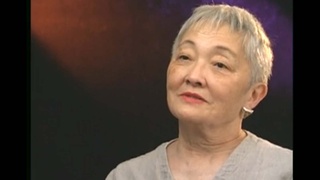Entrevistas
Fort McClellan soldiers
While we were in the 1800th, we never asked why were you here and all that, it’s only after the war I’m finding out you know, who was in there and why they were in there and…like for instance the Fort McClellan bunch, at Fort Riley there was a bunch of Nisei soldiers already segregated. And when President Roosevelt visited Fort Riley, all the Niseis were put into a hanger and To Hori had a pictorial record of it. And I read his interview, and according to him, he says as they were marched into the hanger, outside he could see machine guns and tanks. As they got in there, all the officers had side arms and made them sit on the bleachers and were told to look straight ahead and don’t speak. Except for bathroom break - to raise your hand, you know.
And according to To, he says some of the young Niseis were from Idaho – farmers and all that – never faced discrimination like this and he says they were in tears. And the Kibeis were boiling mad. And so after President Roosevelt left after 4 hours, they got back and he says they were quiet – hardly any talking at all. Now later on, when they were…before they were sent to Fort McClellan, the Kibeis were saying, I’ve made up my mind, they’re gonna treat us as Japanese, I’m gonna be a Japanese, to hell with this country, I won’t fight for this country at all. So when they were shipped to Fort McClellan to receive training to join the 442, a bunch of them rebelled, you might say. And they had a choice, and those that really objected went one way and they were court marshaled and imprisoned.
Fecha: March 25, 2005
Zona: California, US
Entrevista: Sojin Kim
País: Watase Media Arts Center, Japanese American National Museum







